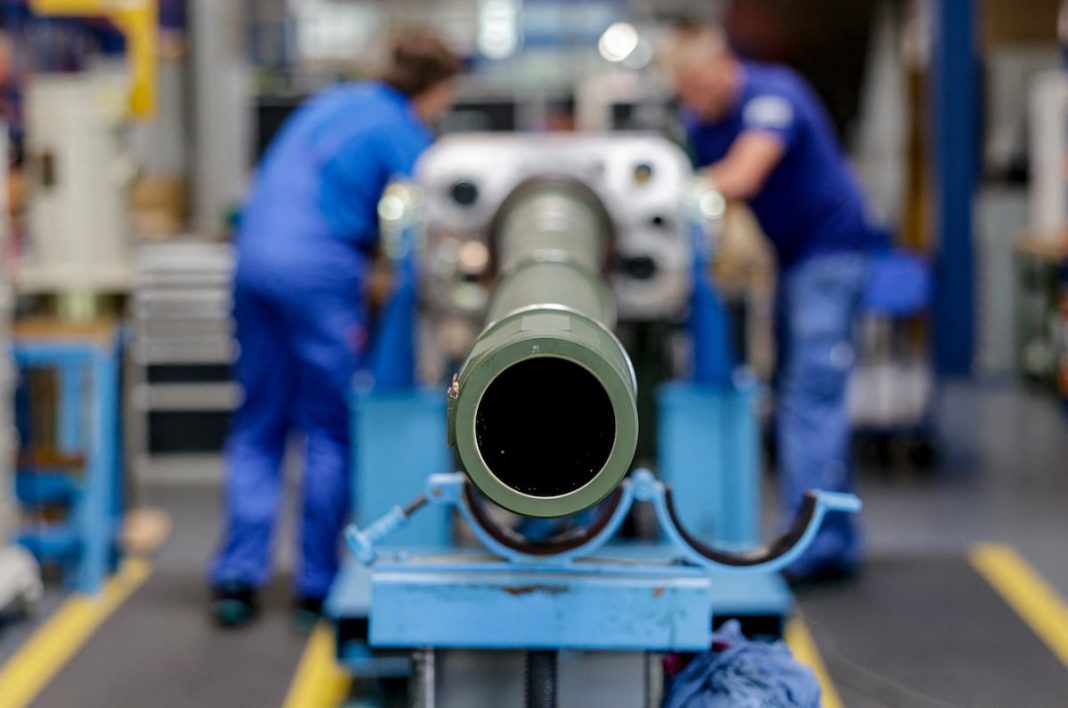ROME — The ongoing conflict in Ukraine has spurred a significant increase in military spending across Europe, leading to a remarkable growth in the continent’s defense industry. According to a report released by the Aerospace, Security and Defence Industries Association of Europe (ASD), the sector experienced a 16.9 percent rise in revenue during the previous year, reaching nearly €160 billion (around $170 billion).
This growth in the defense sector was accompanied by a notable increase in employment, with the workforce expanding by 8.9 percent, resulting in a total of 581,000 jobs in the industry. The ASD, representing around 3,000 member firms in 17 countries, highlighted that the response to Russia’s invasion of Ukraine in February 2022 has prompted governments to rapidly enhance their military capabilities, thus benefitting defense companies across the continent.
The report also indicated a significant increase in defense exports, which rose by 12.6 percent in 2023 to reach €57.4 billion. The association emphasized the importance of these exports, stating, “These exports play a vital role in sustaining the competitive economic performance of the European defense industry, considering the relatively modest size of domestic European markets and the substantial development costs involved.”
When examining specific sectors, the ASD found that Europe’s defense aerospace sector saw a revenue increase of 15.8 percent, amounting to €64.8 billion. Both the naval and land sectors experienced identical growth rates of 17.7 percent, generating revenues of €37.9 billion and €56.2 billion, respectively. Collectively, these sectors brought in approximately €158.8 billion.
In terms of employment distribution, of the 581,000 individuals working within the defense sector, approximately 217,000 are engaged in aerospace, which includes 17,700 new positions created during 2023. The remaining workforce of 364,000 individuals is split between the land and naval sectors.
Despite this constructive growth trajectory, the ASD noted that the defense sector is currently facing critical challenges. It pointed out that years of underinvestment and reliance on off-the-shelf procurement from non-European suppliers have severely diminished production capabilities in Europe. This strategic vulnerability became evident following Russia’s full-scale invasion of Ukraine.
Moreover, the dependence on external suppliers for essential components such as critical minerals and semiconductors poses additional challenges. The ASD stressed that overcoming these obstacles necessitates a unified approach to boost investments, streamline demand and supply, and formulate strategies to lessen reliance on foreign sources for critical manufacturing supplies.
Since the annexation of Crimea by Russia in 2014, the collective defense budget of EU Member States has increased by only about 20 percent. This figure is starkly lower compared to the near 300 percent and 600 percent growth seen in the defense budgets of Russia and China, respectively, during the same period.
In broader terms, when factoring in the combined aerospace, space, and defense sectors, the ASD reported a total revenue growth of 10.1 percent in 2023, culminating in €290.4 billion. Consequently, firms in these sectors added 76,000 jobs, bringing the total workforce to 1,027,000.





